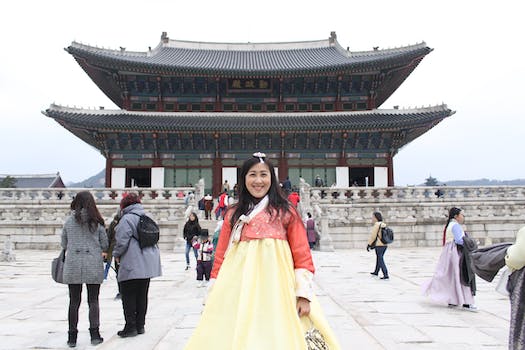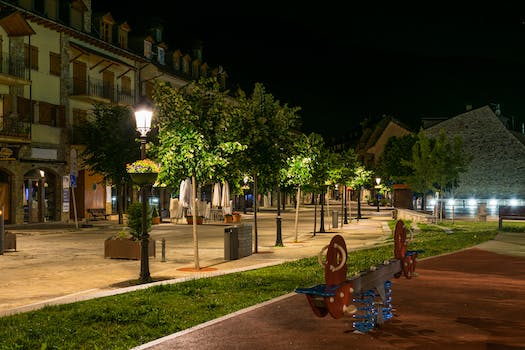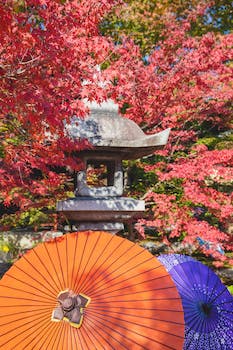

-
Table of Contents
Unveiling Indonesia's Rich Cultural Tapestry
Introduction
Indonesia, a Southeast Asian archipelago, is renowned for its rich and vibrant cultural heritage. With over 17,000 islands and a diverse population, the country is a melting pot of different ethnicities, languages, religions, and traditions. From ancient temples and traditional dances to unique culinary delights and intricate craftsmanship, Indonesia offers a captivating exploration of its cultural tapestry. In this article, we will delve into the vibrant cultural heritage of Indonesia, highlighting its key aspects and the experiences that await those who wish to immerse themselves in this fascinating world.
Traditional Indonesian Dances: A Glimpse into the Rich Cultural Heritage
Indonesia, a country known for its stunning natural beauty and diverse cultural heritage, is a treasure trove of traditions and customs that have been passed down through generations. One of the most captivating aspects of Indonesian culture is its traditional dances, which offer a glimpse into the rich history and vibrant heritage of the nation.
Traditional Indonesian dances are a reflection of the country's diverse ethnic groups and their unique customs. Each region in Indonesia has its own distinct dance forms, characterized by different movements, costumes, and musical accompaniments. These dances are not only a form of artistic expression but also serve as a means of storytelling, conveying myths, legends, and historical events.
One of the most well-known traditional dances in Indonesia is the Balinese dance. Originating from the island of Bali, this dance form is characterized by intricate hand movements, expressive facial expressions, and vibrant costumes. Balinese dances often depict stories from Hindu epics such as the Ramayana and Mahabharata, and are performed during religious ceremonies and cultural festivals.
Another popular traditional dance in Indonesia is the Javanese dance. Originating from the island of Java, this dance form is known for its graceful movements and elegant costumes. Javanese dances often tell stories from Javanese folklore and are performed during special occasions such as weddings and royal ceremonies. The Javanese dance is also accompanied by traditional gamelan music, which adds to the overall enchanting experience.
In addition to the Balinese and Javanese dances, there are numerous other traditional dance forms in Indonesia that are equally captivating. The Sundanese dance from West Java, for example, is characterized by fast-paced footwork and lively music. The Tor-Tor dance from North Sumatra, on the other hand, is a tribal dance performed by the Batak people and is known for its energetic movements and rhythmic drumming.
What makes traditional Indonesian dances truly remarkable is the level of skill and dedication required to master them. Dancers undergo years of training to perfect their technique and learn the intricate movements and gestures that are unique to each dance form. They also learn about the cultural significance of the dances, ensuring that they are performed with the utmost respect and authenticity.
Traditional Indonesian dances are not only a source of cultural pride but also a means of preserving the country's heritage. Efforts are being made to ensure that these dances are passed down to future generations, with dance schools and cultural institutions offering training programs and performances. Additionally, traditional dance troupes often tour both nationally and internationally, showcasing the beauty and diversity of Indonesian culture to a global audience.
In conclusion, traditional Indonesian dances offer a captivating glimpse into the rich cultural heritage of the nation. With their intricate movements, vibrant costumes, and storytelling elements, these dances serve as a means of preserving and celebrating Indonesia's diverse ethnic traditions. Whether it is the graceful Balinese dance, the elegant Javanese dance, or the energetic Sundanese dance, each dance form tells a unique story and contributes to the vibrant tapestry of Indonesian culture.
Exploring Indonesian Batik: A Journey through the Art of Fabric Design

Indonesia, with its rich cultural heritage, is a treasure trove of art and traditions. One of the most fascinating aspects of Indonesian culture is the art of batik, a traditional fabric design technique that has been passed down through generations. Batik is not just a form of art; it is a reflection of the country's history, beliefs, and way of life. In this article, we will take a journey through the world of Indonesian batik, exploring its history, techniques, and significance.
Batik, derived from the Javanese word "amba" meaning "to write," is a method of creating intricate patterns on fabric using wax and dye. The process involves applying hot wax to the fabric in specific areas to create a design, then dyeing the fabric and repeating the process to add more layers of color and detail. The wax acts as a resist, preventing the dye from penetrating the areas it covers. This technique allows for the creation of stunning and complex patterns that are unique to batik.
The history of batik in Indonesia dates back thousands of years. It is believed to have originated in Java, where it was initially used as a way to distinguish social status. The designs and motifs used in batik were often associated with specific regions or communities, and wearing certain patterns was a way to express one's identity and affiliation. Over time, batik became more than just a form of clothing; it became a symbol of cultural pride and heritage.
Today, batik is not only worn as traditional attire but also used in various forms of art and design. From clothing and accessories to home decor and even fine art, batik has found its way into every aspect of Indonesian culture. The intricate patterns and vibrant colors of batik have become synonymous with the country's identity and are recognized worldwide.
The process of creating batik is a labor-intensive and time-consuming one. It requires great skill and precision to apply the wax and dye in a way that creates a harmonious and balanced design. Each piece of batik is a work of art in itself, with the artist's creativity and expertise shining through in every detail. The motifs used in batik are often inspired by nature, mythology, and everyday life, with each design telling a story or conveying a message.
In recent years, there has been a renewed interest in batik, both within Indonesia and internationally. The Indonesian government has recognized the cultural and economic value of batik and has taken steps to preserve and promote this traditional art form. Batik has been designated as a Masterpiece of Oral and Intangible Heritage of Humanity by UNESCO, further cementing its importance in the global cultural landscape.
Exploring the world of Indonesian batik is like embarking on a journey through time and culture. It is a testament to the creativity and ingenuity of the Indonesian people, who have managed to preserve and evolve this ancient art form. Whether you are a lover of art, fashion, or simply curious about different cultures, batik is a fascinating and vibrant part of Indonesia's cultural heritage that is worth exploring. So next time you come across a piece of batik, take a moment to appreciate the intricate patterns and the stories they tell, and let yourself be transported to the colorful world of Indonesian batik.
Unveiling the Mysteries of Indonesian Wayang: Traditional Puppetry at its Finest
Indonesia, a country known for its rich cultural heritage, is home to a diverse range of traditional art forms that have been passed down through generations. One such art form is wayang, a traditional puppetry performance that has captivated audiences for centuries. Wayang, which means "shadow" in Indonesian, is a unique form of storytelling that combines music, dance, and intricate puppetry to bring ancient tales to life.
The origins of wayang can be traced back to ancient Java, where it was initially performed as a form of entertainment for the royal court. Over time, it evolved into a popular form of entertainment for the masses, with performances taking place in villages and towns across the country. Today, wayang is not only a form of entertainment but also a way to preserve and celebrate Indonesia's cultural heritage.
The puppets used in wayang performances are made from buffalo hide or goat skin, which is carefully shaped and painted to depict various characters. Each puppet is a work of art in itself, with intricate details and vibrant colors that bring the characters to life. The puppets are operated by skilled puppeteers, who manipulate them behind a white screen, casting their shadows onto the screen for the audience to see.
The stories told in wayang performances are often based on ancient Hindu epics, such as the Ramayana and the Mahabharata. These epics are reimagined through the lens of Indonesian culture, with local folklore and traditions woven into the narrative. The performances are accompanied by a gamelan orchestra, a traditional Indonesian ensemble that consists of various percussion and melodic instruments. The music adds depth and emotion to the storytelling, enhancing the overall experience for the audience.
One of the most fascinating aspects of wayang is the role of the dalang, or puppeteer. The dalang not only operates the puppets but also serves as the narrator, storyteller, and conductor of the performance. They are highly skilled individuals who have spent years mastering the art of wayang. Through their gestures, voice modulation, and puppet manipulation, they bring the characters to life and transport the audience into a world of fantasy and imagination.
Wayang performances are not just a form of entertainment; they also serve as a medium for moral and spiritual teachings. The stories often convey important life lessons and values, such as the triumph of good over evil, the importance of loyalty and honor, and the consequences of one's actions. Through the medium of puppetry, these teachings are brought to life in a visually captivating and engaging manner.
In recent years, there has been a renewed interest in wayang both within Indonesia and internationally. Efforts are being made to preserve and promote this traditional art form, with workshops, exhibitions, and performances being organized to introduce new audiences to the magic of wayang. The Indonesian government has also recognized the cultural significance of wayang and has designated it as a Masterpiece of Oral and Intangible Heritage of Humanity by UNESCO.
In conclusion, wayang is a vibrant and captivating art form that showcases the rich cultural heritage of Indonesia. Through its intricate puppetry, mesmerizing music, and timeless stories, wayang has the power to transport audiences into a world of fantasy and imagination. As efforts continue to preserve and promote this traditional art form, it is our hope that future generations will continue to appreciate and celebrate the beauty of wayang.
Q&A
1. What are some examples of Indonesia's vibrant cultural heritage?
Indonesia's vibrant cultural heritage includes traditional dances like the Javanese Gamelan, Batik textile art, Wayang shadow puppetry, and the unique architecture of Borobudur and Prambanan temples.
2. How does Indonesia's cultural heritage contribute to its tourism industry?
Indonesia's cultural heritage attracts tourists from around the world, who come to experience traditional music, dance performances, art exhibitions, and explore historical sites. This contributes significantly to the country's tourism industry.
3. What steps has Indonesia taken to preserve its cultural heritage?
Indonesia has established various initiatives to preserve its cultural heritage, such as the establishment of cultural centers, museums, and heritage sites. The government also supports traditional arts and crafts through funding and promotion, ensuring their continued practice and preservation.
Conclusion
In conclusion, exploring the vibrant cultural heritage of Indonesia offers a rich and diverse experience. From its traditional dances, music, and art forms to its unique customs and traditions, Indonesia showcases a deep-rooted cultural identity. The country's numerous historical sites, temples, and museums provide a glimpse into its past, while its culinary delights and festivals celebrate its present. With its vast archipelago and multicultural society, Indonesia's cultural heritage is a treasure trove waiting to be discovered and appreciated by visitors from around the world.












